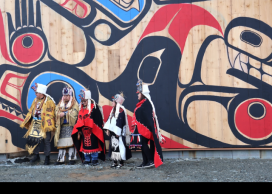UBC researchers help detect the most massive black hole collision ever observed
September 8, 2020
An international team of researchers, including scientists with the University of British Columbia’s gravitational wave astrophysics group, has detected a signal from what may be the most massive black hole merger yet observed. The discovery, outlined in papers published today in Physical Review Letters and The Astrophysical Journal, raises a slew of new questions about the nature of black hole formation, and upends previously held theories about how big holes can get.
- Research
- University news
- Media release





